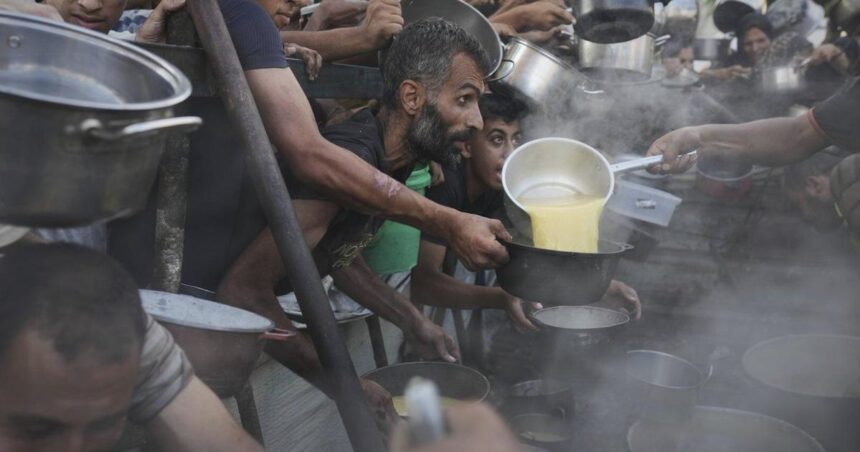The haunting images have become tragically familiar: desperate hands reaching skyward for airdropped food packages, masses of people wading into dangerous waters to retrieve flour sacks, and children with hollowed cheeks waiting for their next uncertain meal. As the conflict in Gaza stretches into its fifth month, the specter of famine is no longer a distant warning but a brutal reality unfolding before the world’s eyes.
“What we’re witnessing is unprecedented in modern humanitarian crises,” says Dr. Amina Khalidi, emergency response coordinator with International Aid Alliance. “The systematic breakdown of food distribution networks has created conditions where even the most basic nutritional needs cannot be met for most of Gaza’s 2.3 million residents.”
Recent assessments from the Integrated Food Security Phase Classification (IPC) confirm that over 575,000 people in Gaza are experiencing catastrophic hunger levels, with experts projecting this number could encompass the entire population by May if current conditions persist. The technical criteria for famine declaration—when at least 20% of households face extreme food shortages, acute malnutrition exceeds 30%, and mortality rates surpass two deaths per 10,000 people daily—appear increasingly imminent in northern Gaza.
The crisis has been exacerbated by severe restrictions on humanitarian aid entering the territory. According to CO24 World News, only a fraction of the required 500 aid trucks needed daily have been permitted entry since October, with many areas receiving no assistance whatsoever. The situation in northern Gaza remains particularly dire, with entire communities cut off from regular food supplies for weeks.
Dr. Michael Fakhouri, nutrition specialist with the World Health Organization, told CO24 News that the consequences extend beyond immediate hunger: “We’re seeing alarming rates of malnutrition among children under five. The long-term developmental impacts—both physical and cognitive—will affect an entire generation even after this conflict ends.”
The crisis has spurred international outrage, with humanitarian organizations calling the situation a “man-made famine.” Recent airdrops of food parcels by several countries, while well-intentioned, have proven woefully inadequate and occasionally dangerous. Last week, five Palestinians died during a chaotic food distribution when packages dropped from excessive heights struck people below.
“Airdrops are a last resort, not a solution,” explains former UN humanitarian coordinator Samantha Reynolds. “They provide a fraction of what’s needed and create dangerous conditions where the strongest—not the most vulnerable—obtain what little aid arrives.”
The economic dimension of this crisis cannot be overlooked. As CO24 Business reporting has shown, Gaza’s economy has effectively collapsed, with food prices skyrocketing when supplies are available at all. Basic items like flour and rice now cost up to ten times their pre-conflict prices, putting them beyond reach for families who have lost livelihoods and depleted savings.
International diplomatic efforts to establish secure humanitarian corridors have repeatedly faltered. Canadian Foreign Affairs Minister Mélanie Joly recently joined calls for immediate unrestricted humanitarian access, according to CO24 Canada, emphasizing that “food must never be used as a weapon of war.”
As the crisis deepens, medical facilities report alarming increases in cases of severe dehydration, malnutrition, and related diseases. Dr. Ibrahim Nasser, one of the few remaining physicians at Al-Shifa Hospital, described treating children “who look like walking skeletons” and infants dying from preventable conditions exacerbated by malnutrition.
The psychological trauma compounds the physical suffering. Mothers report being unable to breastfeed due to their own malnutrition and stress. Families describe making impossible choices about how to distribute insufficient food among household members, with many adults foregoing meals entirely so children might eat.
As world leaders debate next steps and humanitarian agencies plead for access, the fundamental question remains: how many more will suffer before effective action replaces expressions of concern? When the history of this conflict is written, will we look back at these images of reaching hands and hollow eyes as evidence of a preventable tragedy the world chose not to prevent?

























